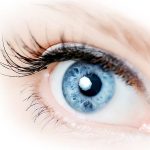
No type of bullying is acceptable, but cyberbullying can be harder for parents to spot because it takes place via cellphone, computer or tablet, often through social media. Cyberbullying can be a hateful text message or post of embarrassing pictures, videos and even fake profiles of the victim. Victims are often bullied in person, too, and have a harder time escaping it. But unlike facing a bully at school, cyberbullying can happen 24/7, even when your child is home with you. Messages and images can be posted anonymously and spread in no time. And it can be difficult or even impossible to find the culprit. The consequences of being cyberbullied are far-reaching. Young victims are more likely to use alcohol and drugs, skip school, lose self-esteem and develop health problems. What can parents do? The website Stopbullying.gov recommends being proactive — talk with your kids about cyberbullying, including why they should never bully others, and encourage them to tell you about any incident right away. Friending or following your kids on social media may help you know if they become the victims of unwanted postings. More tips for parents: Teach kids not to share anything that could hurt or embarrass them or others to avoid retaliation. Regularly check your kids’ social network pages to look for signs of bullying behavior, such as mean images of… read on >




































